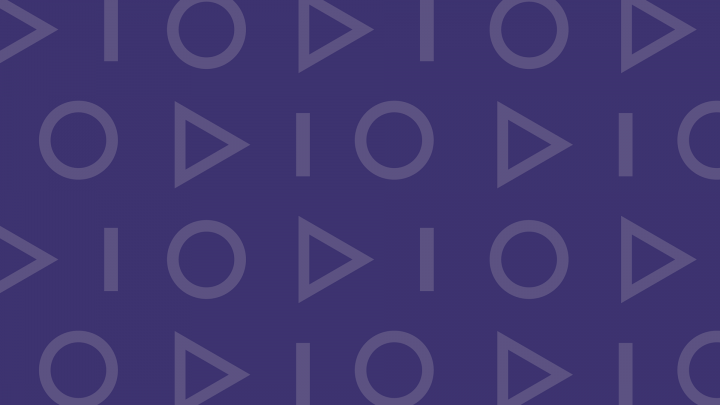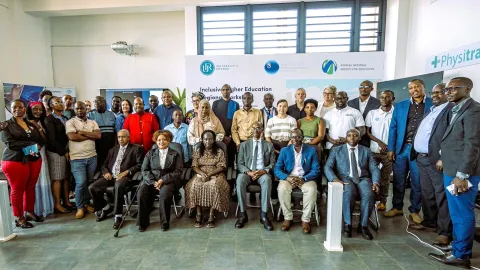Artificial Intelligence (AI) is no longer just a glimpse of the future; it's transforming how we live, work, and interact today. For the 1.3 billion people with disabilities globally, it represents a gateway to independence, inclusion, and dignity. Through my direct participation in the Global Disability Summit 2025 in Berlin, as well as my virtual engagement in the Inclusive Africa Conference and the 18th Conference of States Parties (COSP18) to the Convention on the Rights of Persons with Disabilities (CRPD), I witnessed a powerful wave of global momentum. Across these platforms, AI emerged as a critical tool for breaking accessibility barriers and empowering people with disabilities to live independently, access quality education, and participate in society.
As AI continues to evolve, truly inclusive design must be co-created with the individuals it aims to serve—designed with people with disabilities, not merely for them. As affirmed in Article 4(3) of the UNCRPD, they must be meaningfully involved in decisions that affect their lives. They should be included throughout the innovation life cycle—as researchers, designers, developers, testers, users, and policy advisors. Their lived experience is not supplementary data—it is essential insight.
Inclusive AI promotes equality and innovation while significantly reducing poverty by empowering people with disabilities to contribute and thrive in their society. The World Health Organization estimates that the global economic loss due to disability exclusion ranges from $1.71 to $2.23 trillion annually. By designing accessible solutions from the start, we not only uphold human rights but also unlock social and economic progress that benefits everyone.
This article captures key lessons from those global conversations, providing valuable insights to inform our current initiatives, such as the BERT project, which promotes the inclusion of people with disabilities in education and society by implementing assistive technologies as one of its strategies.
The Global Push for Inclusive AI
In Berlin, the Global Disability Summit marked a significant milestone in the global disability rights movement. What stood out about AI was the central role of AI-powered assistive technologies in panel discussions, exhibitions, and policy pledges. From AI-enabled speech-to-text tools and real-time sign language translation to predictive navigation apps for persons with visual impairments, the message was clear: AI is not a luxury—it's a right. One of the most powerful moments was a live demonstration of an AI-powered wearable that alerts users with hearing loss to environmental sounds. The innovation was developed through a partnership between local disability advocates and a European tech firm—a testament to co-creation in action.
Meanwhile, in COSP18, speakers from various sectors emphasized the importance of integrating human rights principles into AI systems, from design to deployment. While concerns around algorithmic bias, digital divide, and accessibility standards were valid, so was the collective optimism. AI is not just a disruptor; it's a catalyst for inclusion.
Local Innovation, Global Impact
The Inclusive Africa Conference highlighted the immense potential for AI and assistive technologies across the continent. African innovators are not just adapting global solutions—they're creating them. At the Inclusive Africa Conference, innovators showcased tools like Swahili-language screen readers, AI-powered 3D sign language avatars, and solar-charged ear aids designed for people with hearing impairment communities. The solutions weren’t just tech showcases—they responded to everyday challenges.
People with disabilities shared personal stories about how AI tools have helped them study, work, and navigate life. These testimonies were more than inspiring—they were proof that accessible innovation, when shaped by lived experience, works.
Real-World AI Tools Making a Difference
Some examples already changing lives:
- Vision Support: Tools like Be My Eyes use AI to describe surroundings in real-time.
- Mobility: Smart wheelchairs adapt to users and environments.
- Learning: AI tutors help students with learning disabilities personalize their education.
- Communication: Captioning apps and real-time voice transcription increase accessibility.
These innovations are not simply conveniences. They are enablers of autonomy, participation, and dignity.
Looking Forward: Inclusion by Design
The intersection of AI and disability inclusion is a movement, not a moment. As the world embraces digital transformation, we have a choice: build technology that reflects the needs of all people or continue systems of exclusion by design.
What I saw at the Global Disability Summit, Inclusive Africa Conference, and COSP18 made one thing clear: we have the knowledge, energy, and tools to create an inclusive world where accessibility is the default, not the exception.
Let this be our collective call to action: code inclusion into every algorithm, fund innovation that centers equity, and create spaces where everyone—regardless of ability—can thrive.



